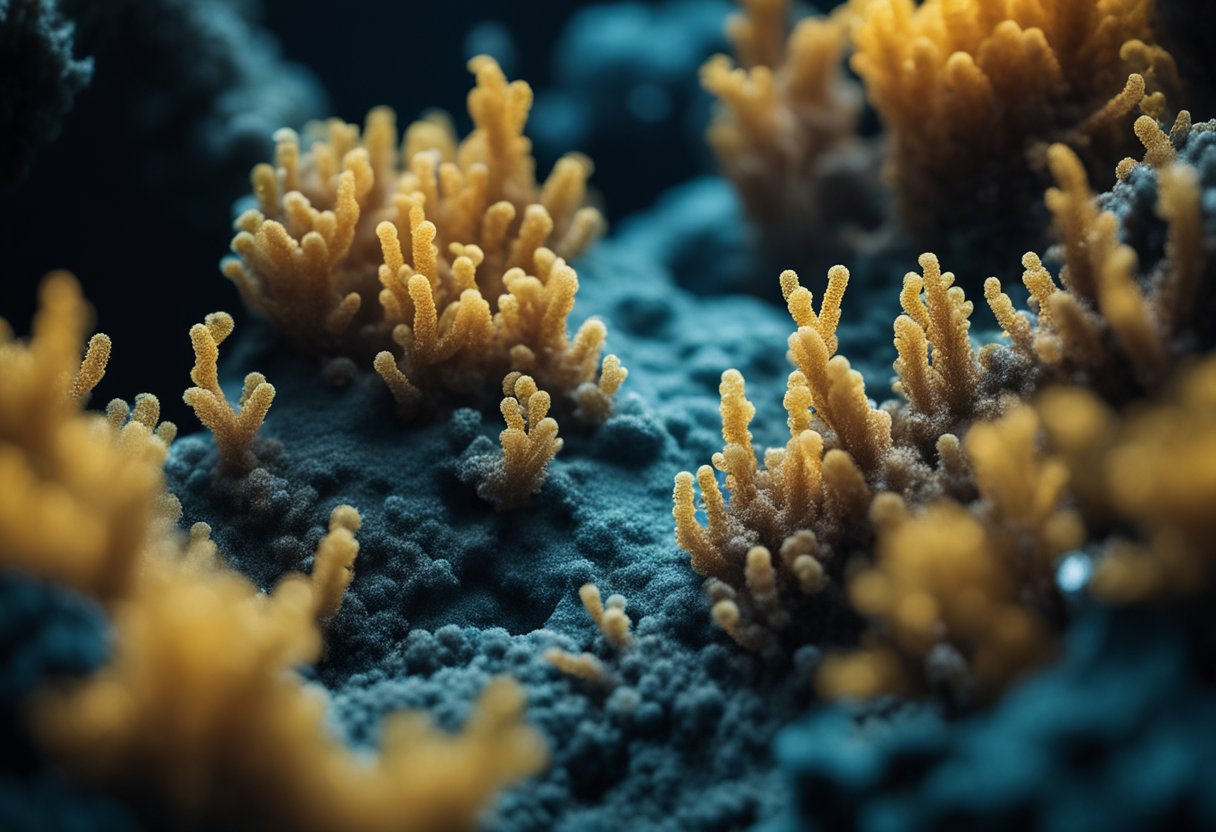
Astrobiology Discoveries – Astrobiology is a multifaceted field that explores one of humankind’s most profound questions: Are we alone in the universe? By studying the origin, evolution, and distribution of life on Earth, astrobiologists gain insights that guide the search for extraterrestrial life. Our planet provides a template for understanding the conditions that sustain life, shedding light on how similar environments might occur elsewhere in the cosmos.

We employ cutting-edge technology to probe beyond our solar system, examining distant exoplanets for signs of life. As we develop new methods to detect biosignatures and biological markers, our journey reveals the resilience of life in extreme environments, hinting at the possibility of life’s existence in the harsh realms of space. These endeavours not only deepen our knowledge of life’s mechanisms but also pose new questions about the nature of life itself.
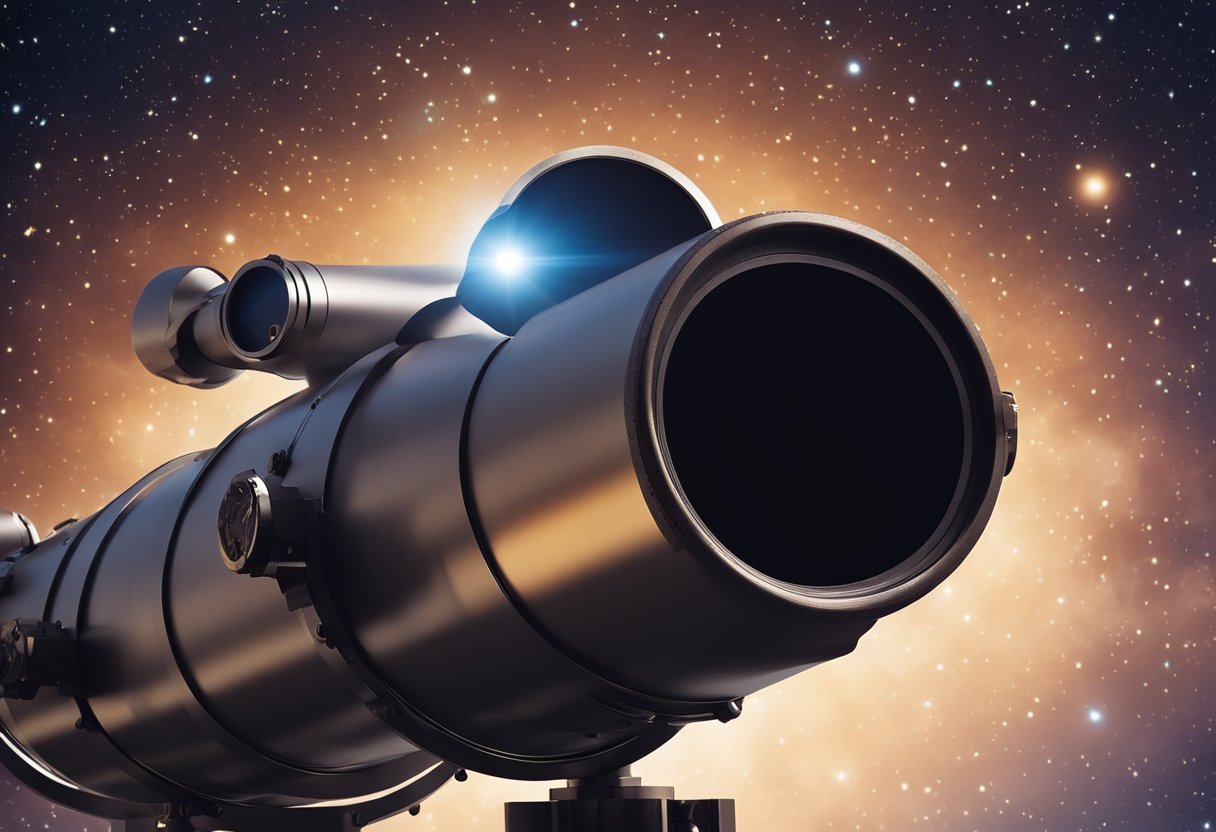
Astrobiology is an interdisciplinary field that explores the origins, evolution, and distribution of life in the universe. It intertwines various scientific disciplines to unravel life’s cosmic story.
Astrobiology, at its core, is the quest to understand life’s potential beyond Earth. It draws on biology, assessing how life develops and sustains. Astrobiology also probes the origins of life, seeking to comprehend the conditions that fostered its emergence on our planet and possibly elsewhere.
At the intersection of astronomy and planetary science, astrobiology examines celestial bodies to decode potential habitats for life. Investigating planets and moons within our solar system and beyond, our work informs us about their compositions, climates, and the possibility of hosting living organisms.
Astrobiology’s integration with planetary science is fundamental. Through the study of other planets’ geology and atmospheres, we gain insights into the conditions and processes that could support life. Our understanding of biological pathways, coupled with the knowledge of planetary environments, allows us to speculate intelligently about the types of organisms that could exist beyond Earth.
As we investigate the possibility of life beyond our planet, we are also mindful of the burgeoning interest in space exploration. We observe the ventures of SpaceVoyageVentures.com, which documents emerging space tourism opportunities. Their work provides a fascinating look at the practicalities of space travel, elucidating the relationship between human ambition and the scientific pursuit of understanding life’s place in the universe.
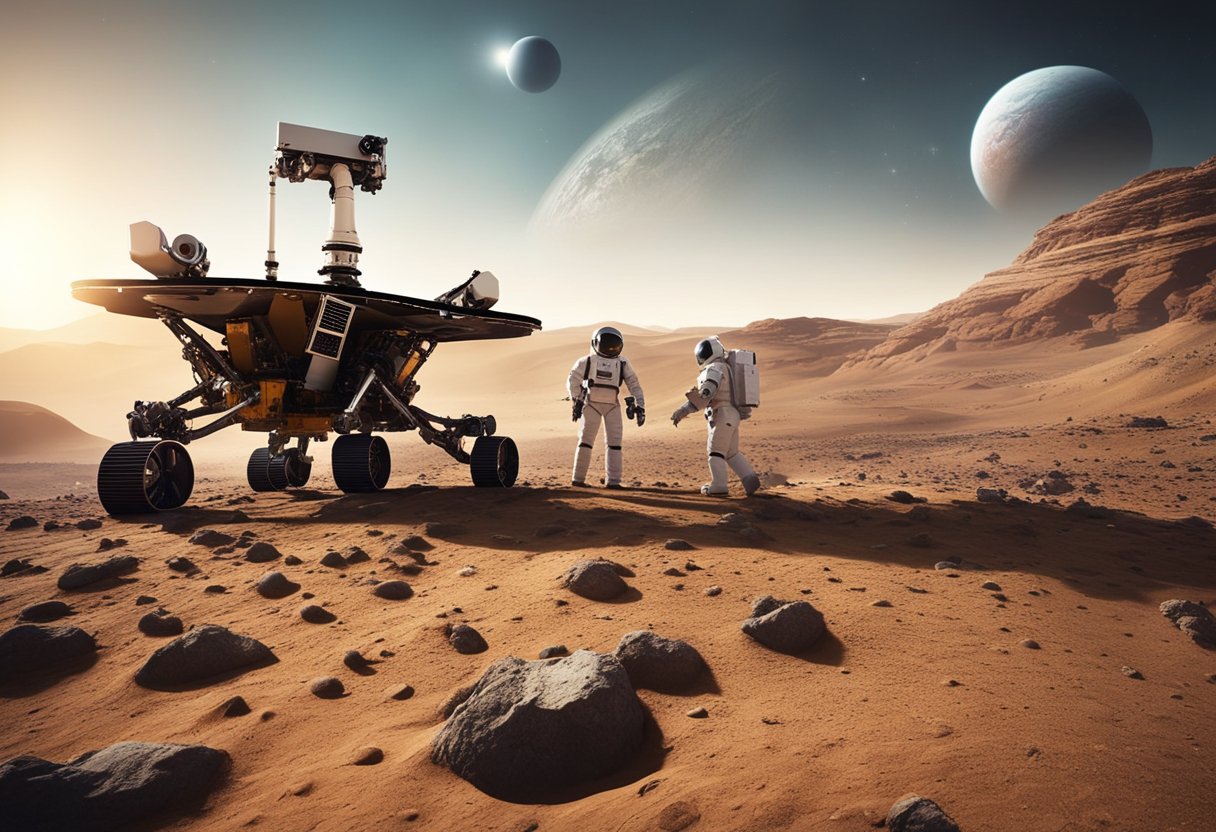
As we embark on the thrilling journey of space exploration, our scrutiny of Mars and the icy moons Europa and Enceladus stands pivotal, shaping our understanding of the Solar System’s potential for harbouring life.
Mars, our neighbouring planet, has been the focus of intense research. We’ve tasked multiple rovers, including the advanced Perseverance rover, with the mission of uncovering the planet’s secrets. They scour the Martian landscape, analysing soil samples and searching for biosignatures that could indicate past or present life. Our orbiters traverse the Martian atmosphere, sending back valuable data that further our knowledge of this enigmatic world.
Within our Solar System, Jupiter’s moon Europa and Saturn’s moon Enceladus have captured our interest with their subsurface oceans. Missions are being planned to probe these moons more closely, examining their ice-covered exteriors and the potential for life in their alien seas. The indispensable James Webb Space Telescope offers us an unparalleled view of these celestial bodies, contributing significantly to our understanding of their composition and activity.
Through meticulous study and innovative missions, we are continuously pushing the boundaries of what we know about our cosmic neighbourhood.
In our quest to understand the cosmos, the discovery and study of exoplanets have been pivotal. Our focus is on how these findings contribute to the search for habitable environments and what the James Webb Space Telescope (JWST) has unveiled.
Exoplanets, which orbit stars other than our Sun, have been identified in vast numbers. The identification of these planets has led to intense study regarding the conditions needed for life. A key concept in this research is the “habitable zone”, an orbital region where liquid water could potentially exist on a planet’s surface, increasing the probability of supporting extraterrestrial life.
Confirmed discoveries:
Factors affecting habitability:
The JWST, with its advanced instruments, is at the forefront of exoplanet research. By analysing atmospheres, it helps us assess the composition and conditions of exoplanetary environments.
Key capabilities:
Recent findings:
Our knowledge is constantly evolving, and as we examine these distant worlds with improved technology like the JWST, we grow ever closer to answering the age-old question of whether we are alone in the universe. With agencies like NASA leading the charge, and innovations such as SpaceVoyageVentures.com documenting our strides toward space travel, the future of astrobiology and exoplanet exploration is exhilarating.
Astrobiology has greatly advanced our understanding of life’s potential beyond Earth. In our search, biosignatures provide critical clues about the existence of life. These biological markers range from the presence of water and oxygen to complex organic chemicals and molecular structures, which together guide us in the hunt for extraterrestrial organisms.
Our search for biosignatures begins with identifying elements and compounds associated with life, such as water, oxygen, and carbon. Locations within our solar system, including Mars and icy moons like Europa, are prime targets due to their past or present water-rich environments. We seek structures within rock or ice, indicative of past life, which might endure as fossils or microbial formations. Simultaneously, we monitor for remotely sensed biosignatures across the cosmos, hoping to detect molecular hints of life on exoplanets.
In the laboratory, we meticulously scrutinise chemical and molecular evidence for signs of life. Our analysis often targets specific biosignatures such as:
Through these measures, we piece together the environmental and biological interactions that govern the presence and preservation of biosignatures. This molecular forensic work complements our broader astrobiological exploration, leading us to a more informed understanding of life’s universal traits and the potential for its existence elsewhere in the galaxy.
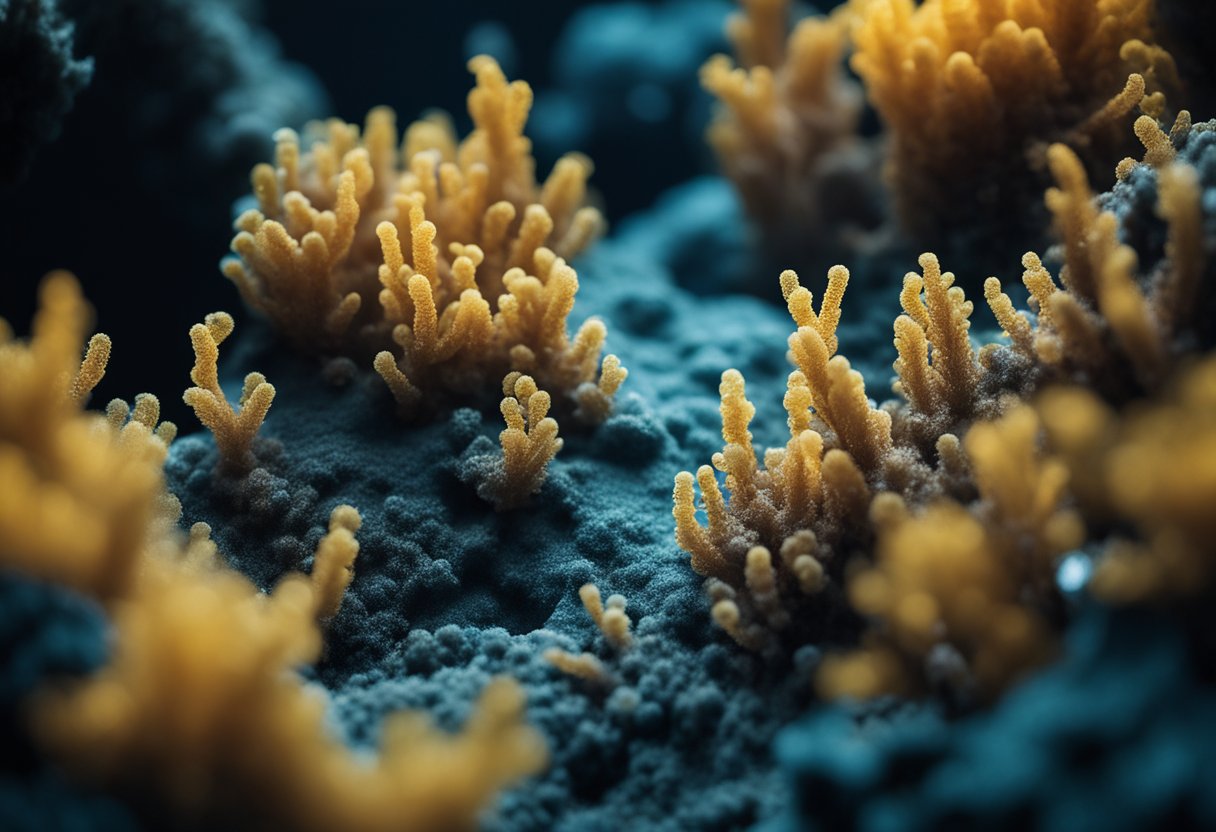
It is our objective to examine organisms that thrive in harsh conditions on Earth and assess the likelihood of life in extraterrestrial settings. We focus on understanding how certain organisms adapt to survive where others cannot.
Extremophiles are organisms that flourish in conditions that are inhospitable to most life forms. In places like the Arctic and Alaska, extremophiles have adapted to the challenges of extreme cold. For example, microbial life in the permafrost survives by producing antifreeze proteins that prevent their cellular fluids from freezing.
Key adaptations include:
These microbes provide insights into the necessary components for life, such as liquid water, and guide our search for organisms in similar environments beyond our planet.
Our attention extends to the prospect of life in space environments that mirror Earth’s extremities. In considering the survival mechanisms exhibited by extremophiles, we contemplate their existence elsewhere, such as on icy moons like Europa, which harbours a subsurface ocean.
Critical factors include:
We utilise sites such as SpaceVoyageVentures.com to monitor advancements in our understanding of these environments, which in turn influence the feasibility of future space tourism and astrobiological research.
In our exploration of the cosmos, we grapple with the profound question of whether we are alone in the universe. The hunt for extraterrestrial life theorises about the existence of life beyond Earth and the possibility that it may range from simple microbial organisms to intelligences possibly surpassing our own.
We consider the prospects of intelligent life existing beyond Earth. While the SETI Institute (Search for Extraterrestrial Intelligence) has not yet found signals that would suggest the presence of alien intellects, the vast number of habitable worlds discovered by missions such as Kepler leave us optimistic about the possibility. Scientists suggest that examining the molecular complexity of cosmic phenomena could lead to indications of extraterrestrial life. These methods analyse astrochemical signatures that might suggest life processes typically associated with intelligent organisms.
Science fiction often portrays contact with extraterrestrial intelligence with a blend of excitement and fear. However, in our scientific research, the approach is multilayered, utilising disciplines such as astrobiology, astronomy, and information theory. For instance, information theory aids in our search for alien worlds by interpreting the spectral data to identify biosignatures.
While the imaginative worlds of science fiction fuel public interest and scientific curiosity, our empirical search for extraterrestrial intelligence remains grounded in methodical observation and cautious optimism.
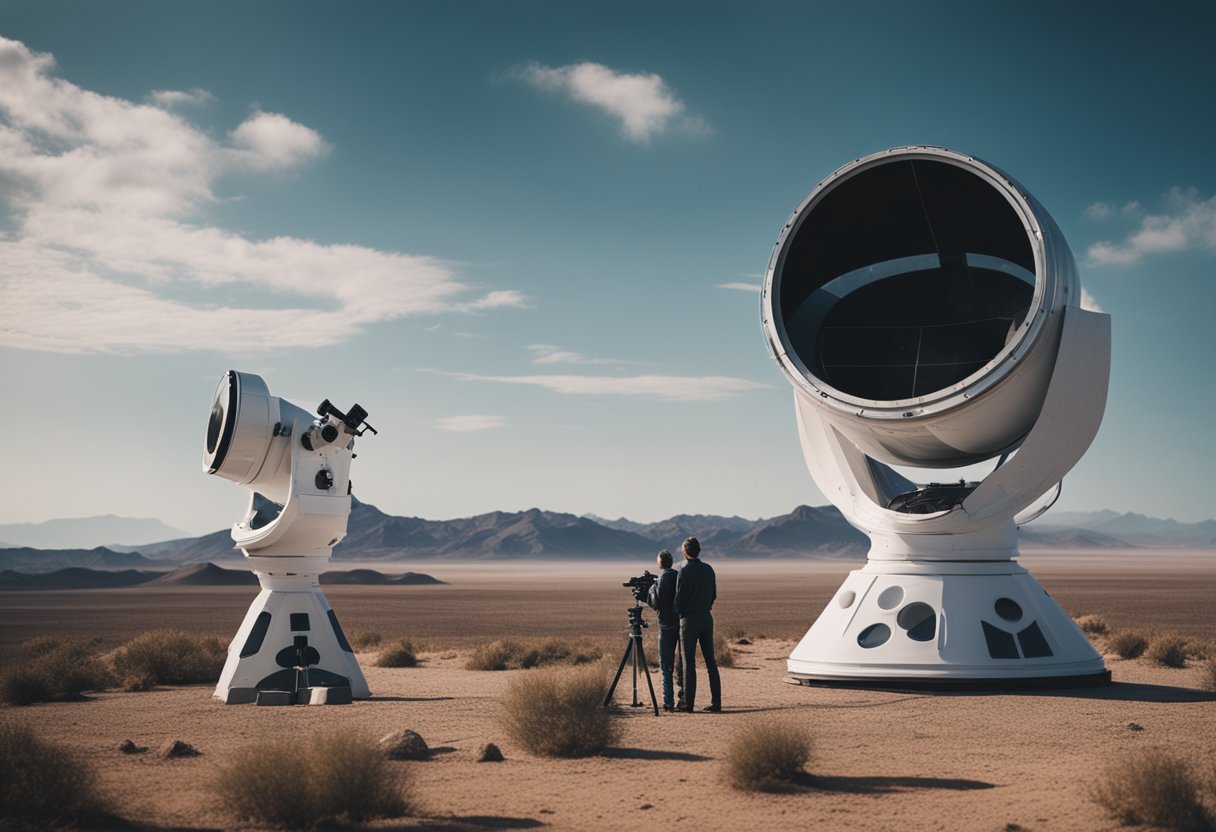
Astrobiology has experienced significant strides forward, largely due to pioneering technology in telescopic research and the deployment of rovers and probes on extraterrestrial bodies.
We’ve witnessed remarkable progress in telescopic technology, enabling us to survey the cosmos with unprecedented detail. Missions like Kepler have transformed our understanding of exoplanets. Recent missions employ space telescopes equipped with advanced spectrometers capable of detecting molecular signatures that suggest the potential for life elsewhere in the universe.
For instance, the James Webb Space Telescope provided us with the first clear evidence of carbon dioxide in the atmosphere of an exoplanet, which suggests the intriguing possibility of analysing atmospheres for biosignature gases.
Rovers and probes represent our eyes and hands across the solar system, playing a crucial role in astrobiology. On Mars, rovers such as Spirit and Opportunity have analysed the surface for signs of past water activity, a key indicator for the possibility of life. Looking further afield, missions targeting the ocean-bearing moons of Jupiter, like Europa, are in development. These missions aim to deploy probes to study the ice-covered surfaces and below, searching for life in subsurface oceans, potentially revolutionising our understanding of life’s resilience.
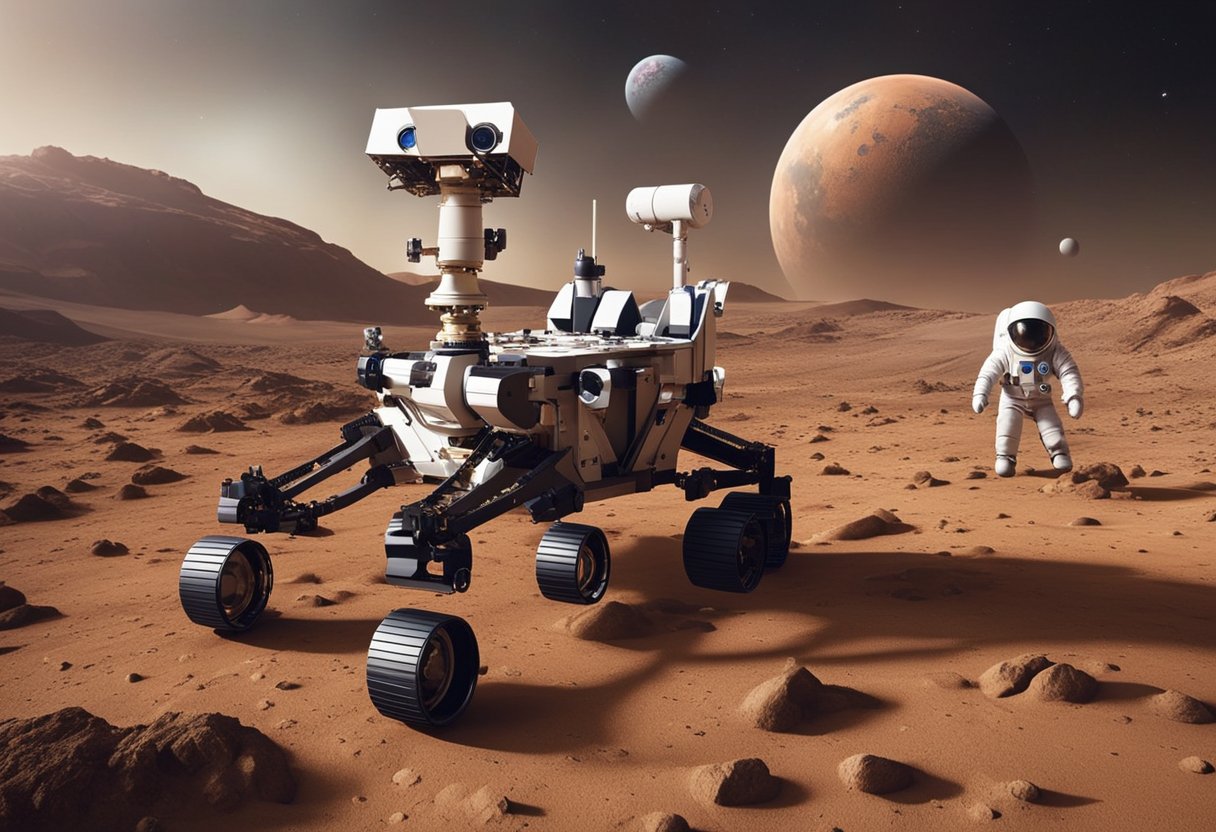
Our exploration of life beyond Earth has been ignited by numerous space missions and significant milestones. Below, we briefly chronicle the endeavours of NASA and ESA, detailing noteworthy missions and the key discoveries that they have yielded in the field of astrobiology.
NASA’s Mars Sample Return Mission:
ESA’s Contribution:
Cassini Spacecraft:
Europa Clipper:
Evidence of Water:
Chemical Building Blocks:
As we cast our gaze towards the vastness of space, places like SpaceVoyageVentures.com curate the dreams and plans of future space tourism, capturing the spirit of our astrobiological quests and fostering public interest in the pioneering missions of agencies such as NASA and ESA. Our understanding of life’s potential beyond our planet has expanded with each mission, driving us to continue uncovering the cosmic tapestry of life.

Astrobiology research stands at a pivotal transitory stage within the space age, with numerous challenges that require clever navigation and an optimistic outlook towards its future achievements.
Funding constitutes a vital catalyst for progression in astrobiology. The competitive nature of grant allocation often means that innovative projects may remain inadequately supported. To bolster our endeavours, it is pivotal that both public and private sectors recognise the long-term benefits of investing in such research. This could pave the way for groundbreaking discoveries about life beyond Earth.
In terms of future missions, prominent space observatories like the James Webb Space Telescope (JWST) have captured scientists’ imaginations, foreshadowing a new horizon of astrobiological research. Our essential goals entail leveraging these technologies to decipher the atmospheres of distant exoplanets.
Additionally, the inception of ventures such as SpaceVoyageVentures.com, signifies an era where astrobiology could intersect with commercial space travel, potentially expanding the scope of research through tourism-inclined missions.
The quest to find life beyond Earth delves into the realms of advanced technologies and cosmic detective work, focusing on deciphering the faint whispers of alien civilisations against the cosmic noise.
SETI, the Search for Extraterrestrial Intelligence, is our collective endeavour to listen for signals of intelligent life from the cosmos. Central to this effort is the Drake Equation, formulated by astrophysicist Frank Drake. The Drake Equation estimates the number of active, communicative extraterrestrial civilisations in the Milky Way. It factors in variables such as the average rate of star formation, the fraction of those stars with planets, and the chance of life developing on these planets.
The equation propels our search, combining astronomical observations and the assumption that the building blocks of life are scattered abundantly across the galaxy. Although criticised for its speculative nature, the Drake Equation continues to inspire and refine the search as our understanding of the cosmos expands.
Our search is not just about the immensity of the Milky Way; it also focuses on the types of stars that might harbour life. For instance, red dwarf stars are of keen interest. Despite their dimness and cooler temperature, these stars have long lifespans, which could allow sufficient time for the building blocks of life to assemble and evolve into complex forms. Within these star systems, we look for ‘Goldilocks’ planets – worlds with conditions just right for life as we know it.
The discovery of such planets ignites the possibility that alien civilisations could be observing the universe just as we are. As we continue to refine our search strategies, we consider not only the signatures of life but also the technological footprints that advanced societies might leave behind.
Our quest through SETI reflects our profound yearning to answer the age-old question: Are we alone in this grand tapestry of the cosmos? With each new discovery, we draw closer to finding our place among the potentially myriad civilisations that might share our galactic home. And as we continue to scan the skies, projects like SpaceVoyageVentures.com remind us of the burgeoning era of space exploration and tourism, where today’s dream of cosmic travel edges closer to tomorrow’s reality.

Astrobiology discoveries have an immense impact on our understanding of life beyond our planet. To effectively share these findings, strategic communication methods are employed.
In our efforts to popularise astrobiology, we regularly conduct outreach programmes aimed at enhancing public engagement. For instance, NASA’s Astrobiology Program integrates educational activities, ensuring complex scientific concepts are approachable. These initiatives might include interactive workshops, such as the Astrobiology Workshop, designed to exchange insights and ignite curiosity about life in the universe.
Presenter-led shows at planetariums often serve as vibrant platforms for disseminating recent astrobiology news. Additionally, collaborations with educational institutions augment curriculums and foster a new generation enthusiastic about astrobiological research.
Media coverage plays a pivotal role in how astrobiology research is conveyed to the public. We partner with media outlets to deliver accurate and timely news regarding the latest findings. Documentaries, news articles, and even social media channels serve as conduits for sparking interest in the search for extraterrestrial life.
Our involvement with burgeoning initiatives, like SpaceVoyageVentures.com, reinforces public interest in space exploration and astrobiology. Through such platforms, we aim to communicate the excitement and potential of space tourism, linking it with astrobiological exploration and the broader implications for humanity.
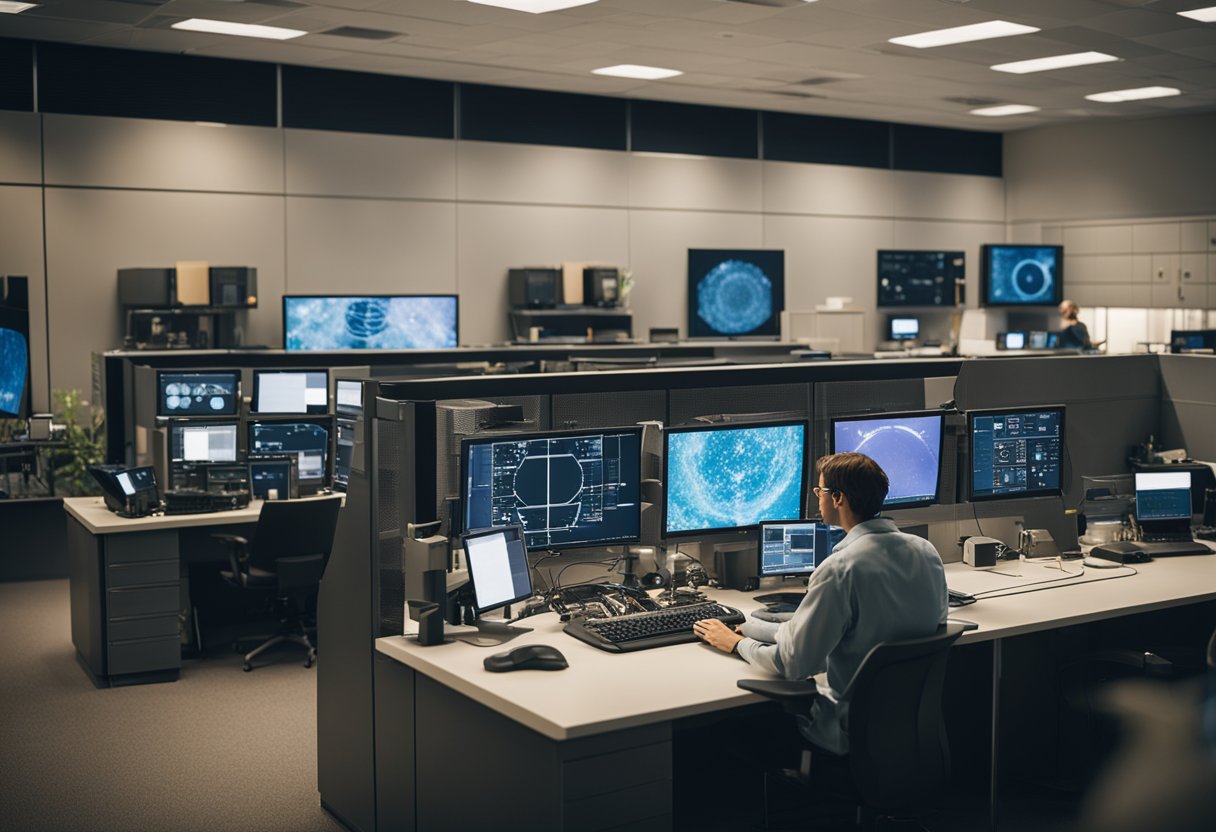
As we explore the intricate field of astrobiology, we uncover answers to questions surrounding life on other planets, the origins of life itself, the resilience of extremophiles, the tools aiding our cosmic discoveries, the potential habitability of Mars, and the experts driving this science forward.
Recent missions have identified specific atmospheric signatures on exoplanets that indicate the possible presence of water vapour, a critical component for life as we know it. The use of artificial intelligence in the analysis of complex data from telescopes has also been pivotal in discerning the characteristics of these distant worlds.
Astrobiology provides insight into the chemical precursors necessary for life. Studies focused on the origin, evolution, and distribution of life expand our understanding of how life might arise elsewhere in the universe and offer perspectives on where else life could potentially thrive.
Understanding extremophiles—organisms that survive in extreme environments on Earth—has led to the recognition that life could potentially exist under seemingly inhospitable conditions on other planets. This research instructs our search for life by defining what environmental factors are truly a barrier for survival.
Innovations in telescopes, such as the development of more sensitive detectors, allow us to observe planets orbiting other stars in greater detail. These advancements enhance our ability to detect signs of life by analysing planetary atmospheres and surface conditions from afar.
Findings from rovers like NASA’s Perseverance point to evidence of ancient river deltas on Mars, suggesting that the red planet may have once harboured liquid water—a key ingredient for life. Analyses of Martian rock samples further inform our hypotheses about the planet’s potential to support life.
In our community, leaders such as Dr. Sarah Stewart Johnson and Dr. Penelope Boston have significantly contributed to our knowledge of Martian biology and cave-dwelling extremophiles, respectively. These scientists, among others, continue to shape our understanding of life’s durability and the environmental limits of habitability.